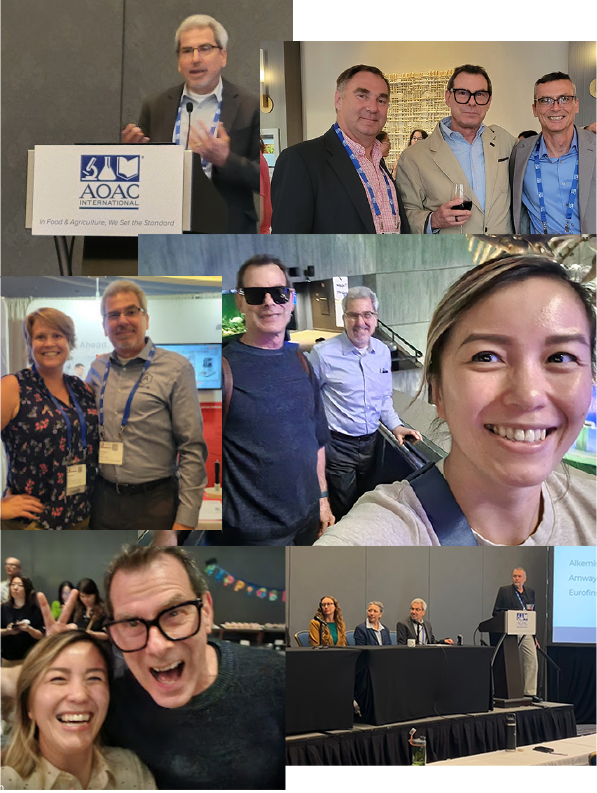Posted on |
Our HPTLC Supervisor Khanh Tran offers this recap from the AOAC annual meeting in Baltimore last month:
Is it cold in here… or it just me at AOAC 2024 in Baltimore, Maryland? Although the session rooms may have induced from chills and had some attendees donning their winter jackets, the conference itself seamlessly blended topics with a captivating keynote, inviting community working sessions, and practical sessions for all attendees.
I joined Sidney and Anthony at AOAC this year (it was my first time!) as they presented at multiple sessions during the conference as subject matter experts.
Sidney presented a recent study that Alkemist Labs performed in collaboration with Herbalife, specifically on how to apply, and the significance in applying, statistical analysis to qualitative testing. The statistical analysis allows for more confidence and provides a baseline in methodologies that rely less on a numerical result and more on a comprehensive fingerprint or description of botanical ingredients. The statistical analysis was created based on lab data from Alkemist Labs and Herbalife, and was derived from the brilliant mind of Robert Lebaude.
Anthony highlighted the importance of establishing orthogonality in testing, both qualitatively and quantitively, by presenting real samples and their confounding issues in one testing methodology that can be resolved in another. From crude materials to extracts to blend materials, the use of orthogonal testing not only provides additional support for a more confident result, but also brings to light the weaknesses or gaps in one method that is not prevalent in another. Anthony also spoke at the conference’s BIDSI program meeting on the applications of HPTLC and microscopy testing for botanical ingredients and products. He was one of six speakers invited to present during the program meeting.
Here are my “Top 3 Takeaways from AOAC 2024”:
- Integrating AI with TLC is closer than ever before, with recent work by Amway’s Nathan Stern’s creating an AI tool aiming at removing subjectivity from botanical identification. Nathan’s work could enable users to create a botanical fingerprint library, and distinguish between AI generated and authenticate chromatograms, as well as test for the adulteration issues that we see run rampant in botanical materials.
- Orthogonal testing using a variety of assays or methodologies is the key in obtaining data with a high degree of certainty that meet both selectivity and specificity requirements. Don’t go chasing that “one size fit all” model for testing. Instead, focus on creating a toolbox of analyses for your testing purposes.
- Eleanor Kuntz of LeafWorks and Adam Faller of Herbalife spoke on their different viewpoints and perspectives on the possible applications, the best use cases, and their recent research projects of genomics for botanical and fungal identification.
Meeting with other scientists all immersed in related work is always enlightening, inspiring, and motivating.

